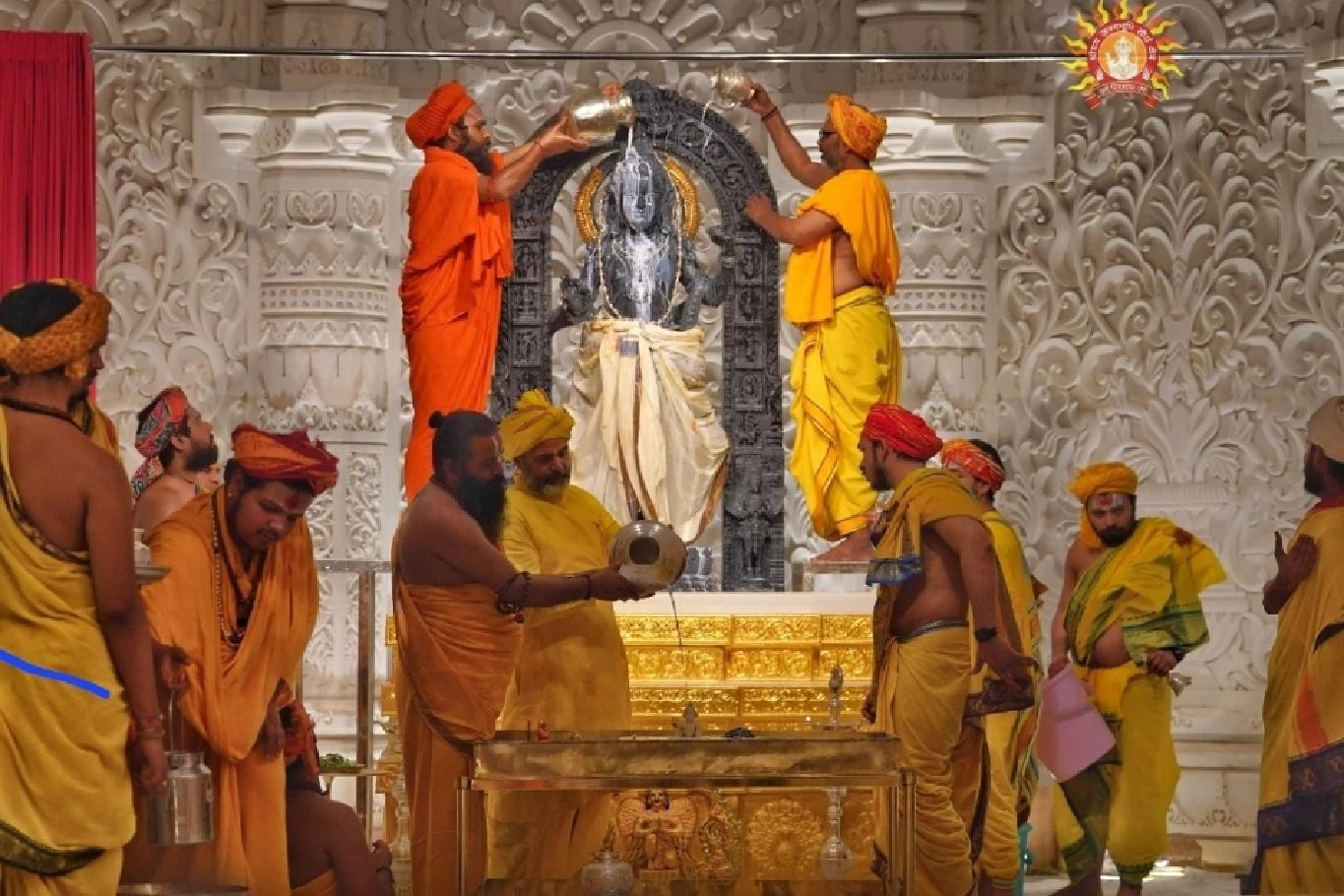
On the occasion of Ram Navami, a significant event unfolded at Ayodhya’s Ram Temple. Ram Lalla, who was ceremoniously welcomed to the temple in January, experienced a divine occurrence known as Surya Tilak or Surya Abhishek. During this ritual, sunrays illuminated the forehead of the deity, symbolizing a divine blessing. It is believed that Lord Ram, belonging to the Ishvaku clan, is a descendant of the Sun God, or Suryavanshis.
The scientific explanation behind this phenomenon involves meticulous planning and engineering. Scientists from IIT-Roorkee collaborated to design the Surya Tilak mechanism. This apparatus utilizes high-quality mirrors and lenses to precisely direct the Sun’s rays onto Ram Lalla’s forehead at a specific time. The mechanism, resembling a gearbox, incorporates reflective surfaces and lenses strategically positioned to ensure the sunlight reaches the sanctum sanctorum.
The tilak apparatus is crafted from durable materials like brass and bronze to withstand environmental factors. Engineers have calibrated the mechanism to align with the lunar calendar, ensuring accurate positioning of the sun on Ram Navami each year. The design prioritizes longevity and low maintenance, with components engineered without springs.
Technical expertise from institutions like the Indian Institute of Astrophysics and Optica has been enlisted for support and manufacturing. Dr. Pradeep Chauhan, a CBRI scientist involved in the temple’s design, affirms the efficacy of the Surya Tilak mechanism, emphasizing its reliance on gears rather than electricity or batteries.
The incorporation of traditional Indian alloy, Pancha Dhathu, further enhances the authenticity of the ritual. Former ISRO scientist Manish Purohit explains the considerations taken, including archaeoastronomy, the metonic cycle, and analemma, to ensure the synchronization of Ram Navami with the Sun’s alignment.
This practice of harnessing sunlight for religious significance is not unique to the Ram Temple. Various temples across India, such as the Suriyanar Kovil Temple in Tamil Nadu and the Modhera Sun Temple in Gujarat, employ architectural designs to allow sunlight to illuminate their sanctums during specific times of the year. These traditions underscore the intersection of science, architecture, and spirituality in Indian culture.













